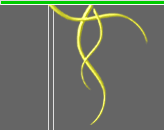| |
Dandelion (Taraxacum officinale)
Dandelion as a medicine was first mentioned in the works of the Arabian physicians of the tenth and eleventh centuries, who speak of it as a sort of wild Endive, under the name of Taraxcacon. In this country, we find allusion to it in the Welsh medicines of the thirteenth century. Dandelion was much valued as a medicine in the times of Gerard and Parkinson, and is still extensively employed.
Dandelion roots have long been largely used on the Continent, and the plant is cultivated largely in India as a remedy for liver complaints.
Daniel Mowrey PH.D, author of "The Scientific Validation of Herbal Medicine" states, "Dandelion heads the list of excellent foods for the liver." The herb has been used for centuries to treat jaundice and the yellowing of the skin that comes with liver dysfunction, cirrhosis, hepatitis and liver disease.
But liver function isn't the only use of this nutritious plant. It is also used to treat infections, swelling, water retention, breast problems, gallbladder problems, pnuemonia and viruses.Studies have shown that dandelion stimulates bile flow and has a mild diuretic effect.
Modern naturopathic physicians use dandelion to detoxify the liver and reduce the side effects of prescription medications.
Dandelion is on the FDA's list of safe foods and is approved by the Council of Europe.
The chief constituents of Dandelion root are Taraxacin, acrystalline and Taraxacerin, an acrid resin, with Inulin (a sort of sugar which replaces starch in many of the Dandelion family, Compositae), gluten, gum and potash. It contains substantial levels of vitamins A, C, D, B-complex, iron, magnesium, zinc, potassium, manganese, choline, calcium and boron.
Diuretic, tonic and slightly aperient. It is a general stimulant to the system, but especially to the urinary organs, and is chiefly used in kidney and liver disorders.
The fresh juice of Dandelion is applied externally to fight bacteria and help heal wounds. The plant has an antibacterial action, inhibiting the growth of Staphococcus aureus, pneumococci, meningococci, Bacillus dysenteriae, B. typhi, C. diphtheriae, proteus. The latex contained in the plant sap can be used to remove corns and warts. Dandelion is traditionally used as a tonic and blood purifier, for constipation, inflammatory skin conditions, joint pain, eczema and liver dysfunction, including liver conditions such as hepatitis and jaundice.
When placed in a paper bag with unripe fruit, the flowers and leaves of Dandelion release ethylene gas ripening the fruit quickly. A liquid plant food is made from the root and leaves. A dark red dye is obtained from Dandelion root. A cosmetic skin lotion made from the appendages at the base of the leaf blades distilled in water, is used to clear the skin and is effective in fading freckles.
Return to Information Library
Disclaimer:
The information presented herein is intended for educational purposes only. These statements have not been evaluated by the FDA and are not intended to diagnose, cure, treat or prevent disease. Individual results may vary, and before using any supplements, it is always advisable to consult with your own health care provider.
|














